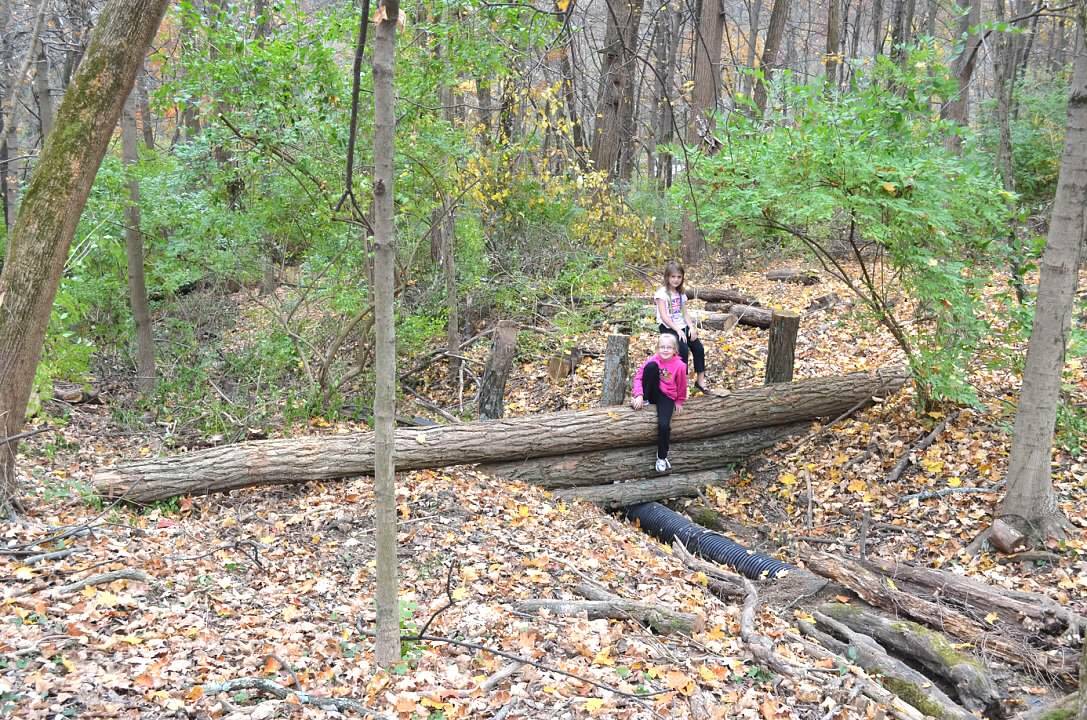Wild Humans
Some of the ways I've tried to include humans in my ecologically restored woods. I think about what happens when I'm gone or decide to sell. What will make future owners decide to carry the restoration work forward or at least preserve the woods?
Woodland restoration observation platform (aka treehouse). Built on a black locust stump.

Lately I've been using black locust logs to line my trails. They don't rot, which gives time for moss to form on the logs... I like the texture and feel of the moss. I use eastern red cedar chips on my trails. Eastern red is a common regional native and the chips are fragrant and rot resistant.

Black locust wall. Built with the upper 3/4 of the same tree that the treehouse is built on.

The wall, pictured above, allowed me to level out a small area for a fire pit below the tree house...

Decorative rock walls using "free" craigslist fieldstone transported down the hill in a wheelbarrow. Part of the goal was to see what one person could accomplish with free materials and working in the margins over a long period of time.

Made a rope swing during honeysuckle removal. Tied a fishing line to a baseball and threw it over the highest strong branch I could find. Then pulled a bigger string over the same branch using the fishing line. And finally pulled the heavy rope over the branch with the string. The trick is to leave the heavy rope twice as long as you need it and tie a loop in one end to pull the other end of the rope through the loop from the ground (so you don't have to climb the tree). It is very hard to find a "professional" to build you a rope swing. If you paddle the Little Miami they exist all up and down its banks. Built by all sorts of people with varying degrees of skill. Some of them are completely unsafe. But you can't deny their charm.

I openly admit that each of my projects to entice humans has had a negative impact ecologically. I tell myself that I'm on the positive side of the ledger having given back via invasive removals while taking the space for the rock walls, trails, and fire-pit. If an added bonus is that future owners are more able to appreciate (and keep) the natural space, the loss of what would have been additional ecologically pure areas will have been worth it.



 Usá ArgentiNat con app iNaturalist
Usá ArgentiNat con app iNaturalist





